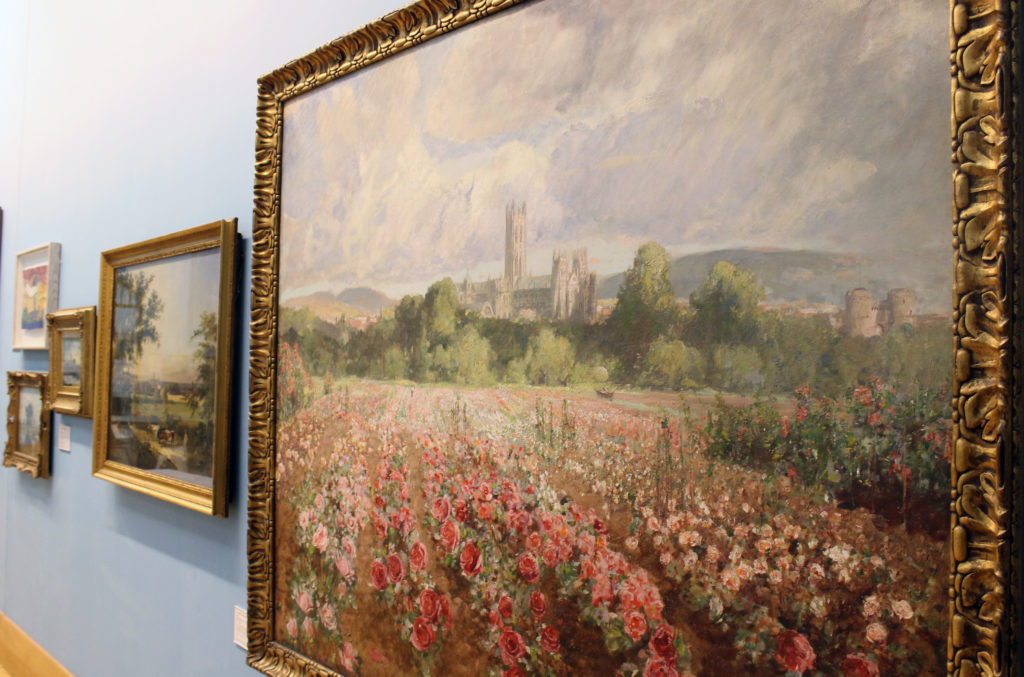
Easter fun at the museums!
Exhibitions, trails and activities; six fun things for all the family to enjoy at The Beaney and...
Recently we were joined at The Beaney by a local Sixth Form Student who took on a work placement with us. Isaac spent a week at The Beaney supporting our work at the museum and whist he was here he took a particular interest in two items from the collection:

“These seemingly innocuous chunks of masonry seems to me to be one of the most mysterious and unique artefacts in the entire museum.
Unearthed in a Sandwich field, the two rough hewn, fifth or sixth century stones that now reside in the Beaney have been worn by the ravages of time. Yet whilst one’s original inscriptions have been lost to history the other’s- held within the exhibit- is inscribed with “RÆHÆBUL”. Mentioned within the 1872 edition of “Archaeologia Cantiana”, a contributor to the work ”read it RAHABUL, a personal name of peculiar form”. Devoid of any Christian imagery, these funerary monuments are pagan and thus extraordinarily rare in Britain.
Likely erected at some point preceding St Augustine’s conversion of the Jutish kingdom of Kent to Christianity but of this we can’t be entirely certain. Those who placed this stone may well have done so subsequent to Christianity becoming the popular religion, despite the stigma around the continued practice of paganism at this time. The stone may instead have been placed by members of a Scandinavian- Viking- raiding party, wishing to mark the death of their fallen comrade yet this theory cannot be confirmed either. Funerary monuments from this period, such as that of “RÆHÆBUL” are extraordinarily rare. It was likely constructed and placed to commemorate him as a great warrior or perhaps a wealthy magnate. Theoretically, perhaps, this stone’s history has been romanticised: it might simply be a form of signage or a marker along a road, the bizarre name carved into it may be nothing more than an example of graffiti.
But in many ways, even this doesn’t eradicate its profound historical significance. The Anglo-Saxon period- also known as “the dark ages”- has precious few remaining artefacts, particularly in regards to writing, and those stored in the Explorers and Collectors Gallery are therefore all the more valuable. That someone from more than a millennia in the past deigned to carve their name into this rock, that it survived so many centuries and that it was discovered intact and partially legible is truly astounding.
This Funerary Stone intrigues me because of how little is known of it. The character of “RÆHÆBUL”, so wreathed in obscurity that only his name remains of his legacy- and even that is considered “peculiar”. This pagan stone, as unique as it is unassuming, as ancient as it is unknown fascinates me because of its ineluctably enigmatic past. It likely marks the death of an individual but in many ways, one could argue, it also echoes the death of a pagan heritage amongst the Anglo-Saxon and Jutish settlers of Britain as they were gradually incorporated into Christendom.”
Thanks to Isaac for his interesting research!
Explore the collection online